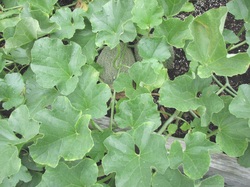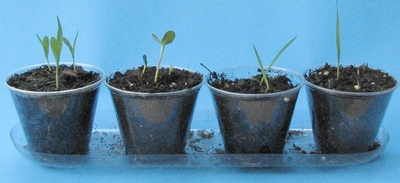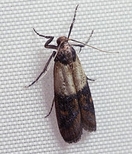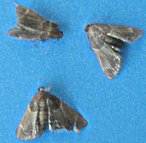
In the 1950's researchers at Michigan State University under the direction of Dr. H. B. Tukey, demonstrated leaf absorption of fertilizer by using radioactive isotopes and tracking feed travel through the leaves. They found that plant nutrients move at the rate of about one foot per hour through the plant. And, fertilizer manufactures jumped on the news and began hyping the use of foliar feeding as a general practice.
But, the general practice of soil amendments is still the desirable way to feed plants. The usual addition of Nitrogen, Phosphorus, and Potassium in some combination is quite enough for many plants. The cover photo shows my cantalope with healthy leaves and the forming melons, and that suggests that no added nutrients are needed. The value of foliar feeding becomes evident with those plants that require trace elements like iron, boron, magnesium, and other chemicals not found in most soil. Many growers have discovered that fertilizer made with kelp, which does have many trace elements, to be a very effective leaf treatment.
I am adding two links for further reading. The first is a discussion of some of the myths concerning foliar feeding here. The second is an experiment that is inconclusive but interesting and can be found here. I am planning some experiments using fluorescent dye to track the travel in plant leaves. Meanwhile, I wait for the cantalope...





 RSS Feed
RSS Feed
